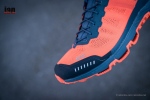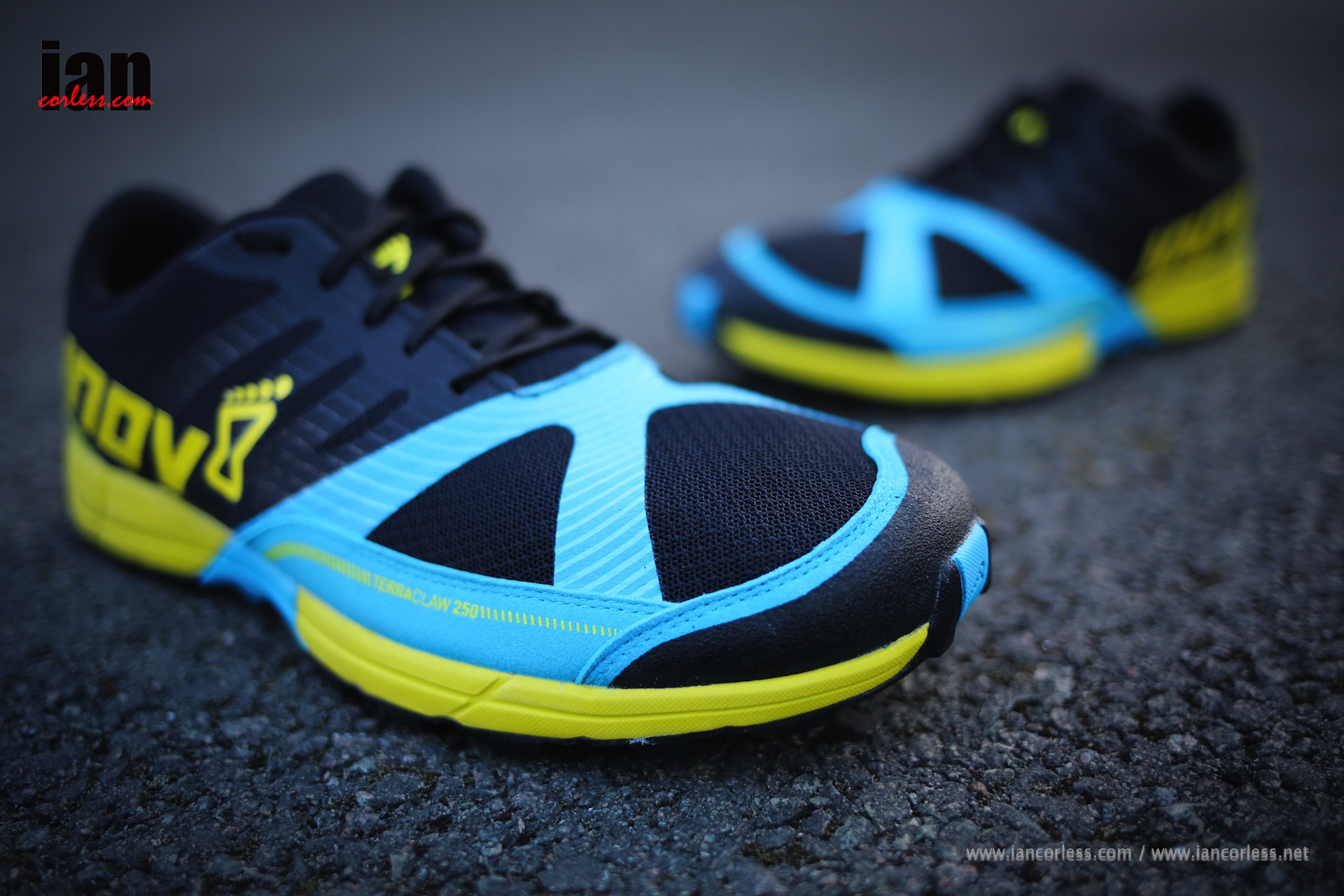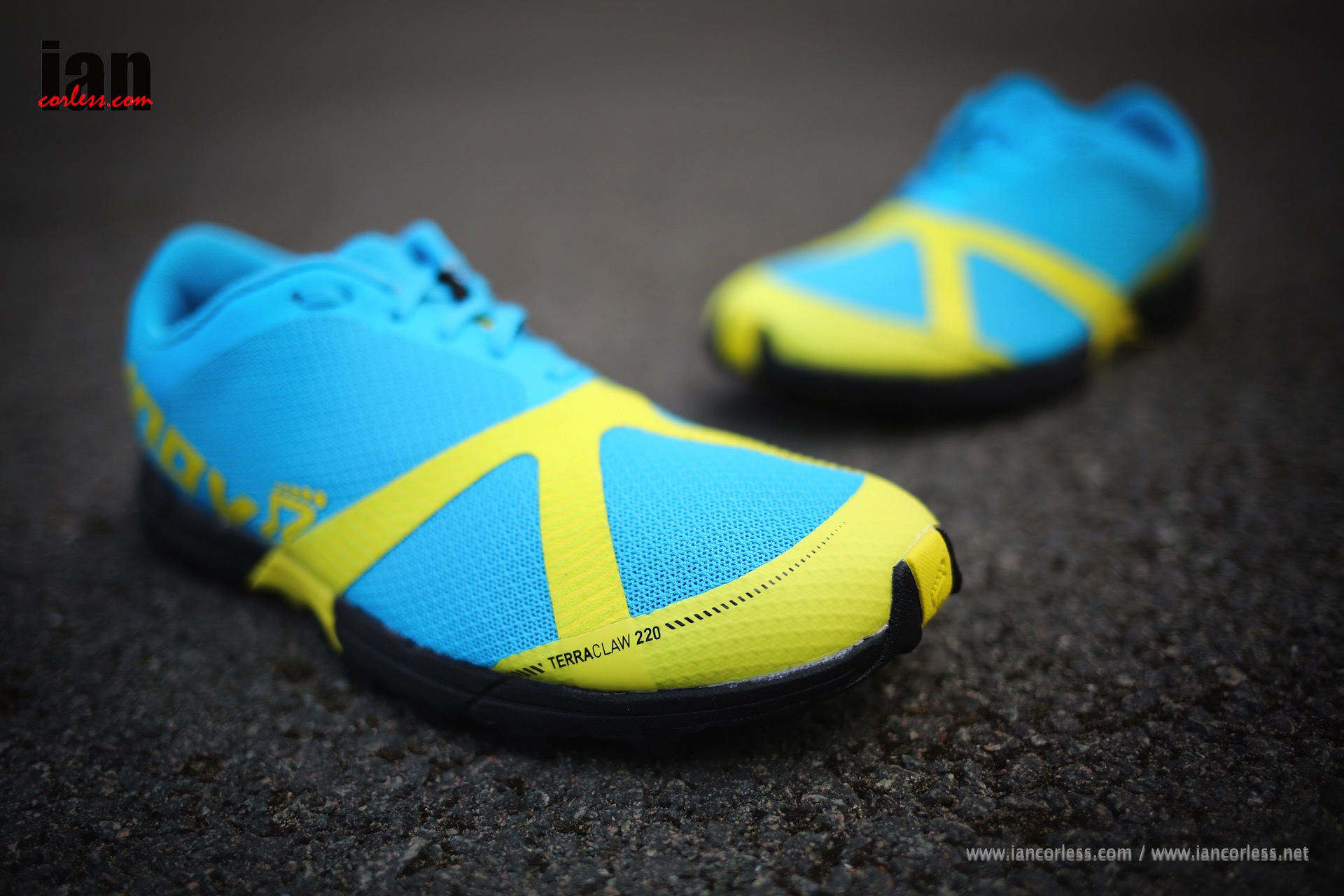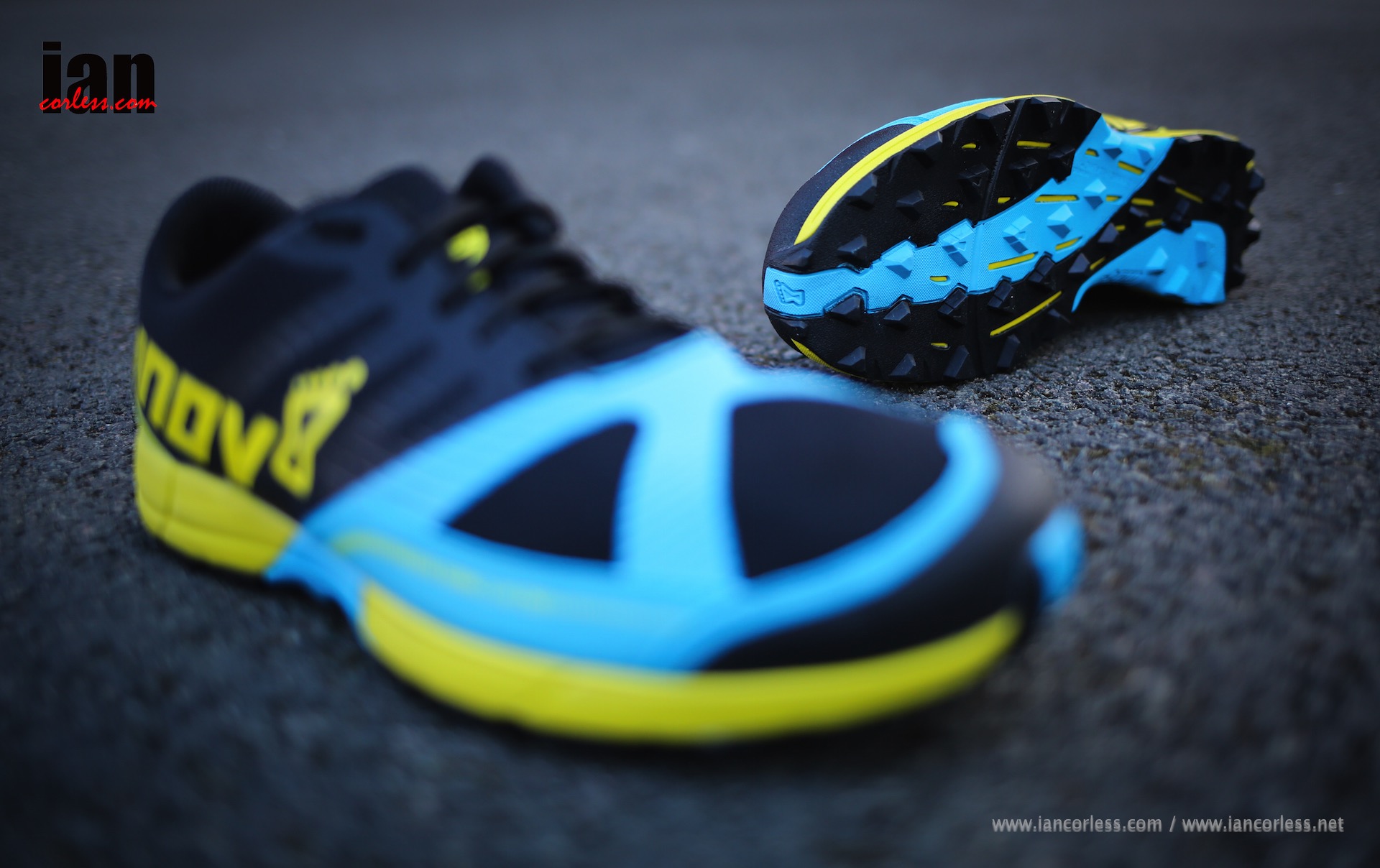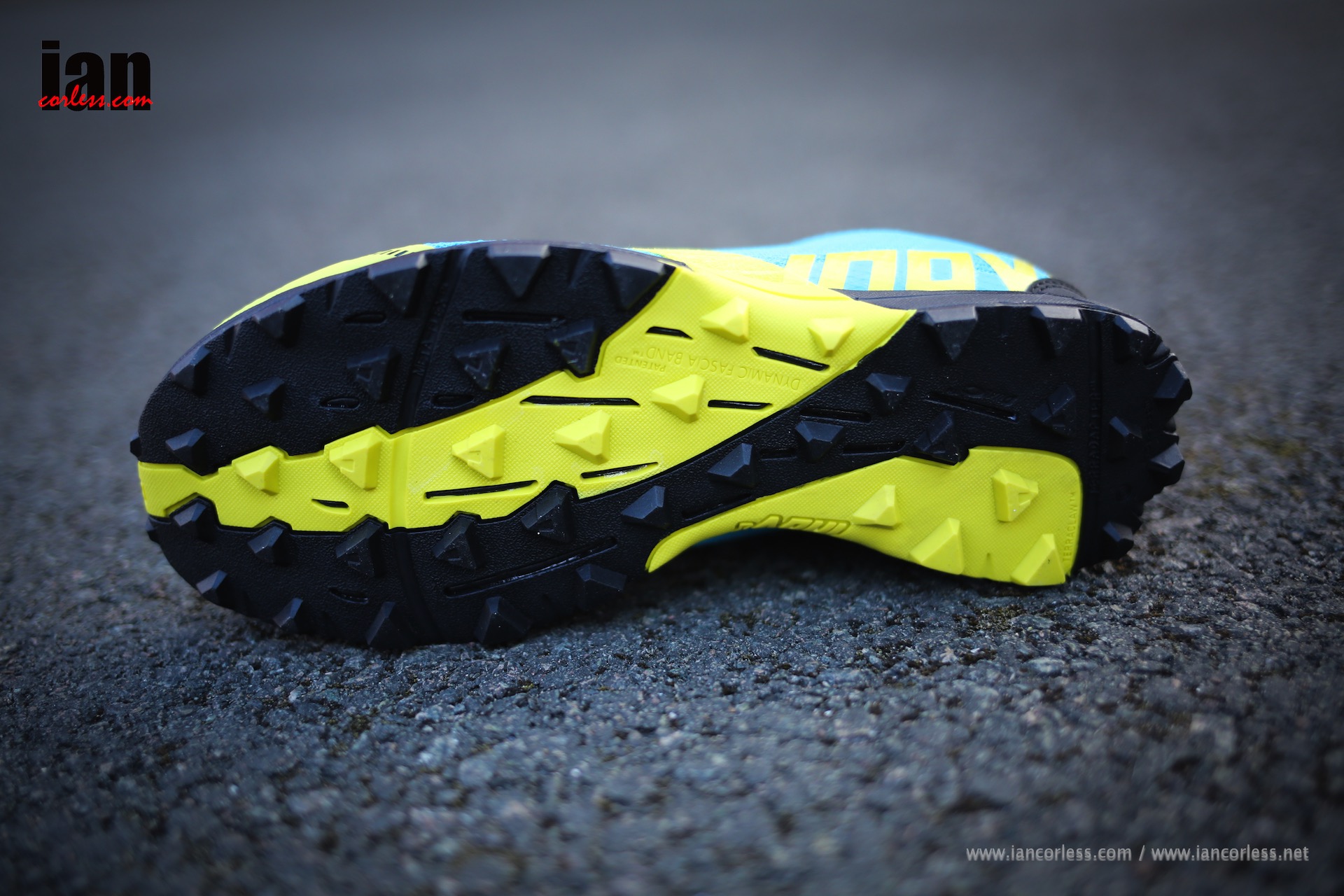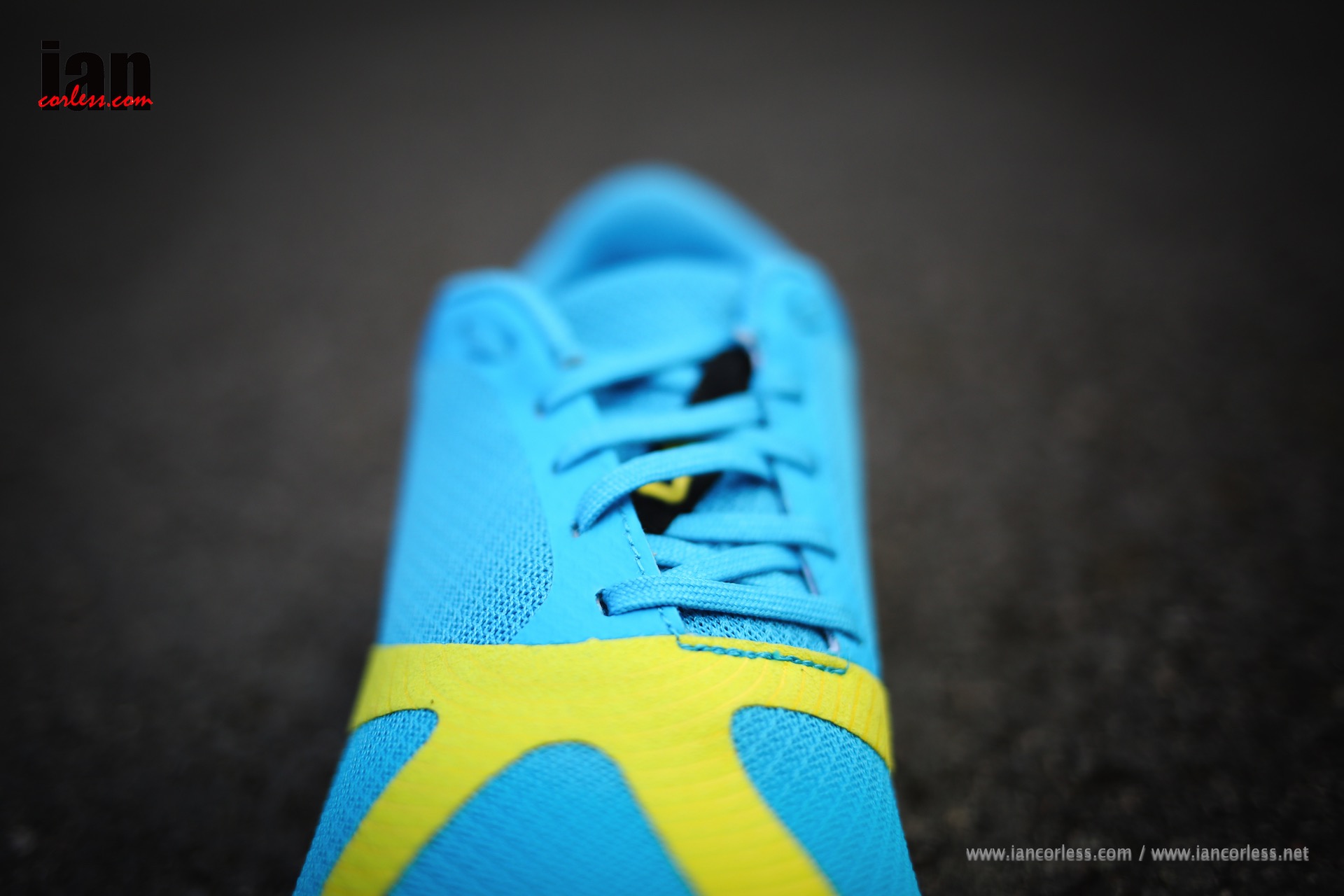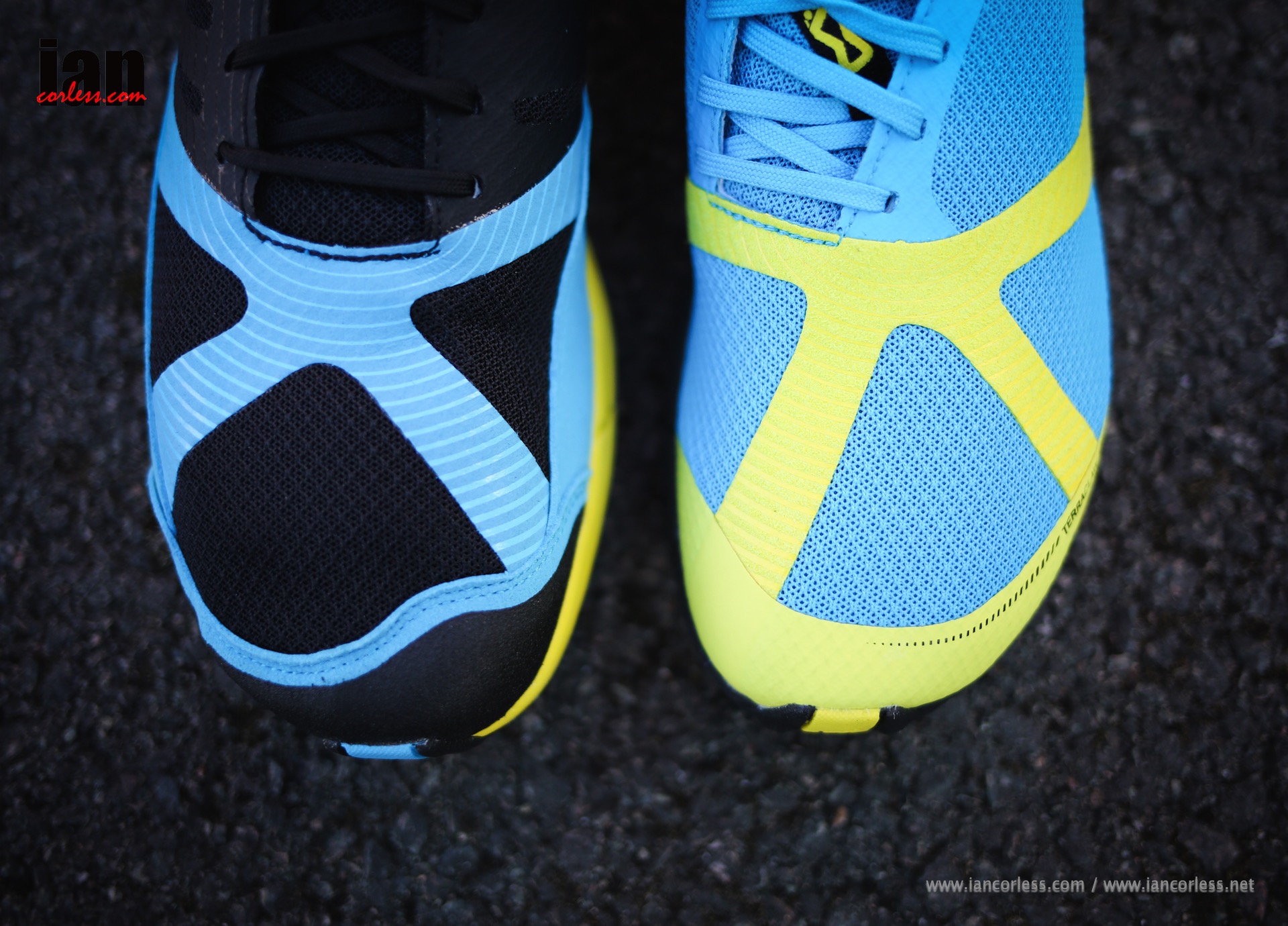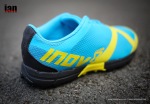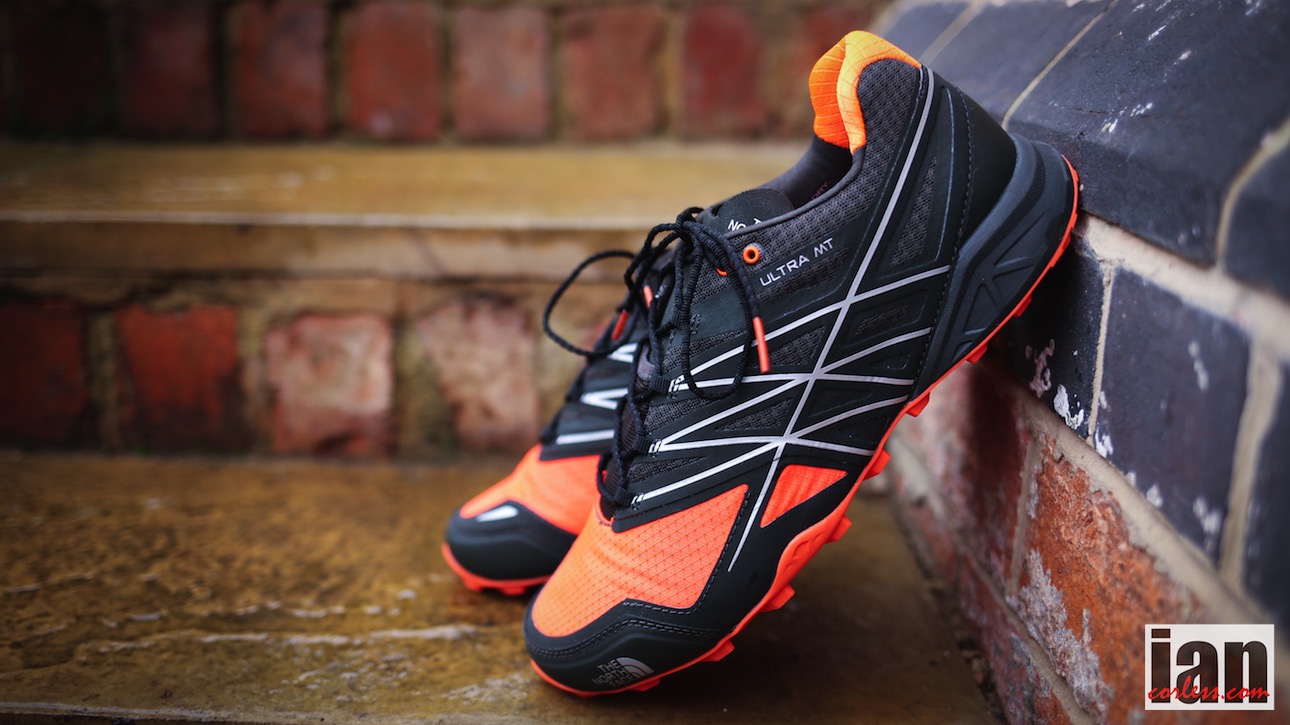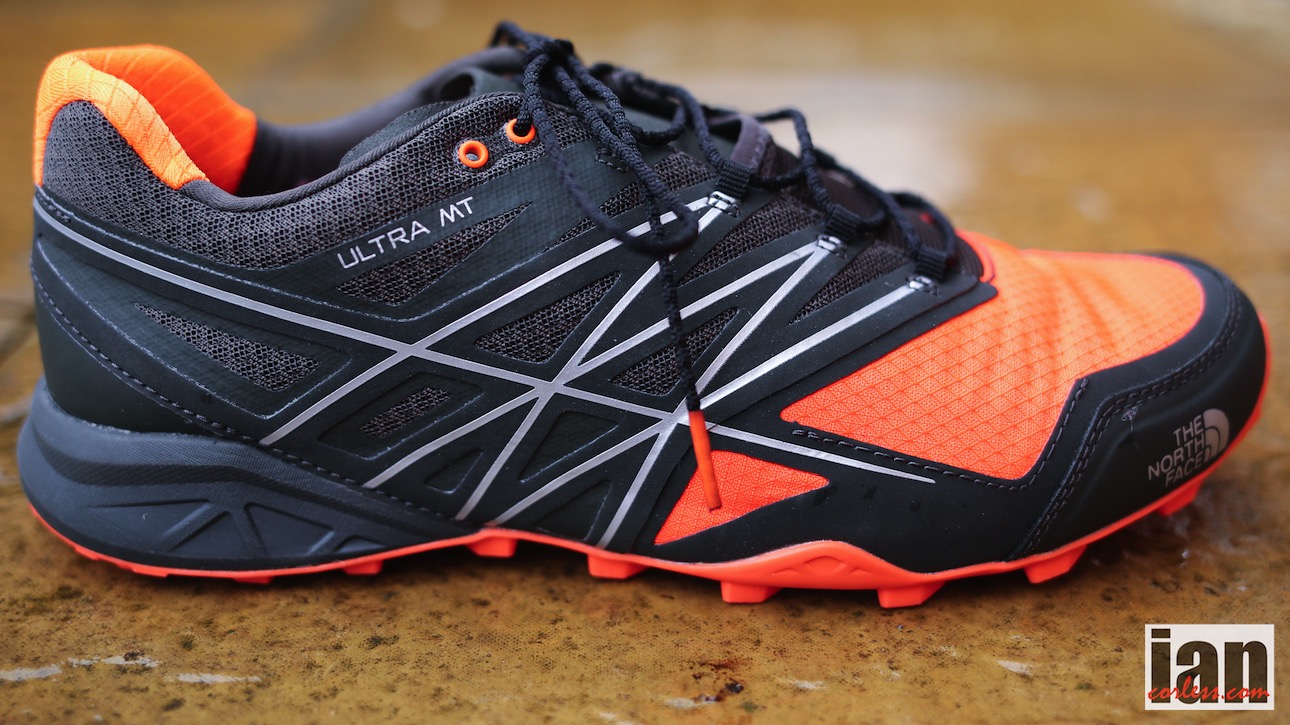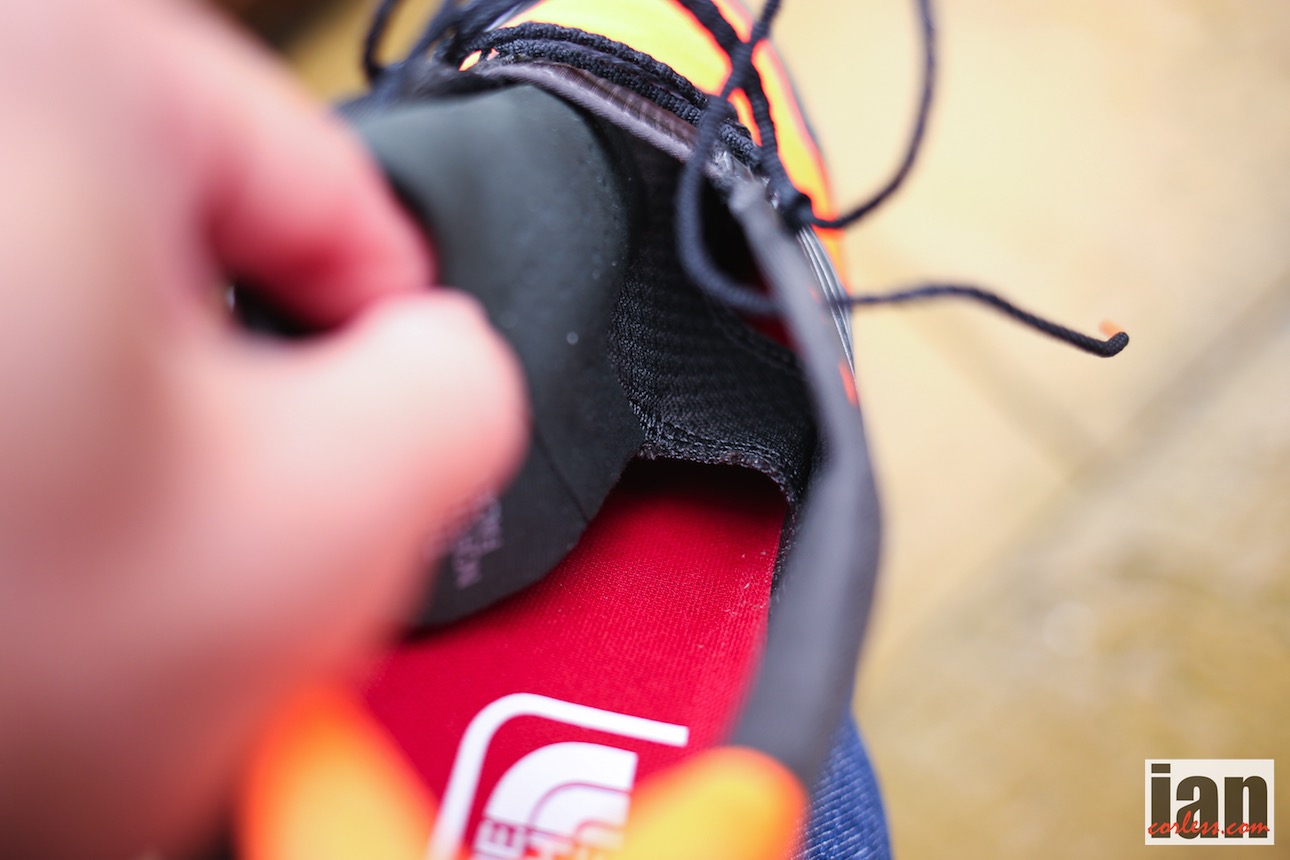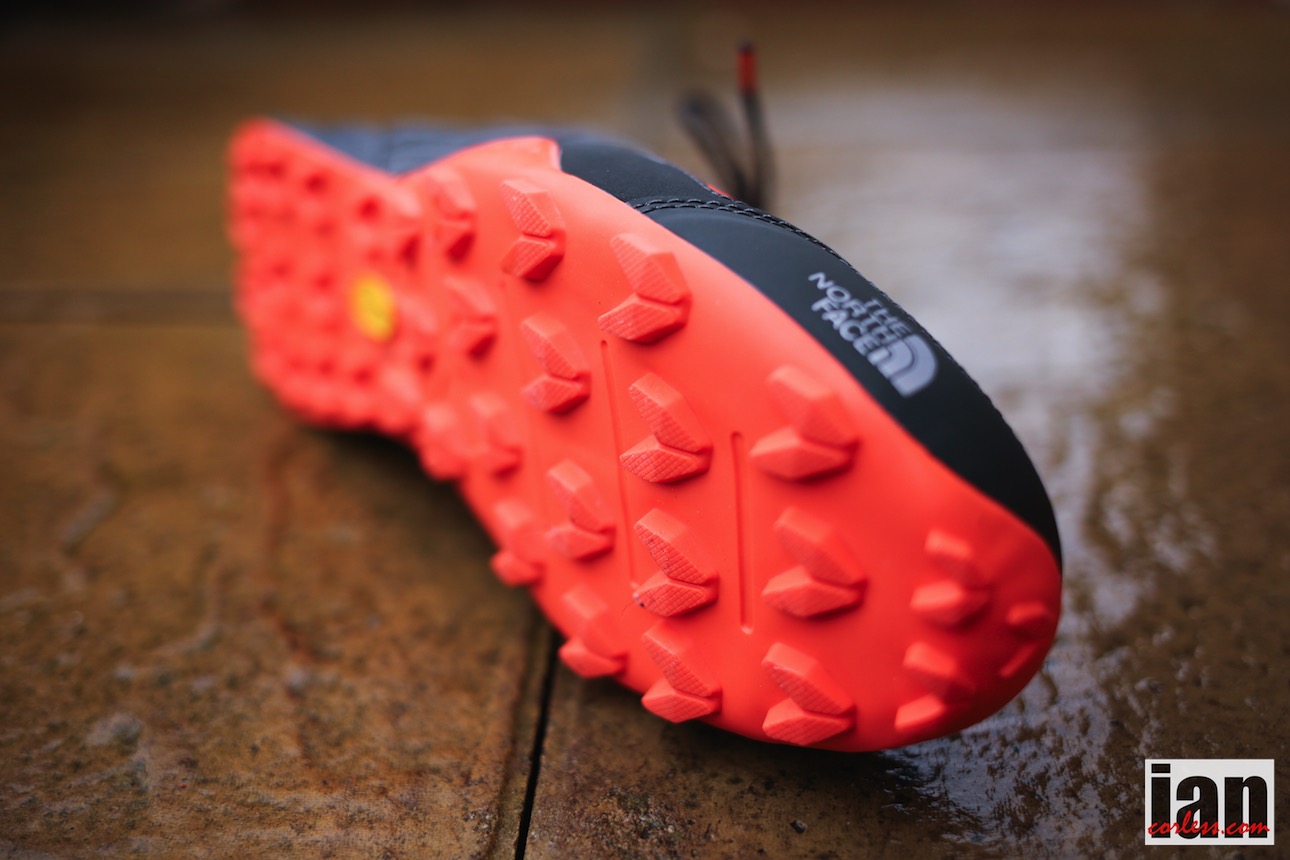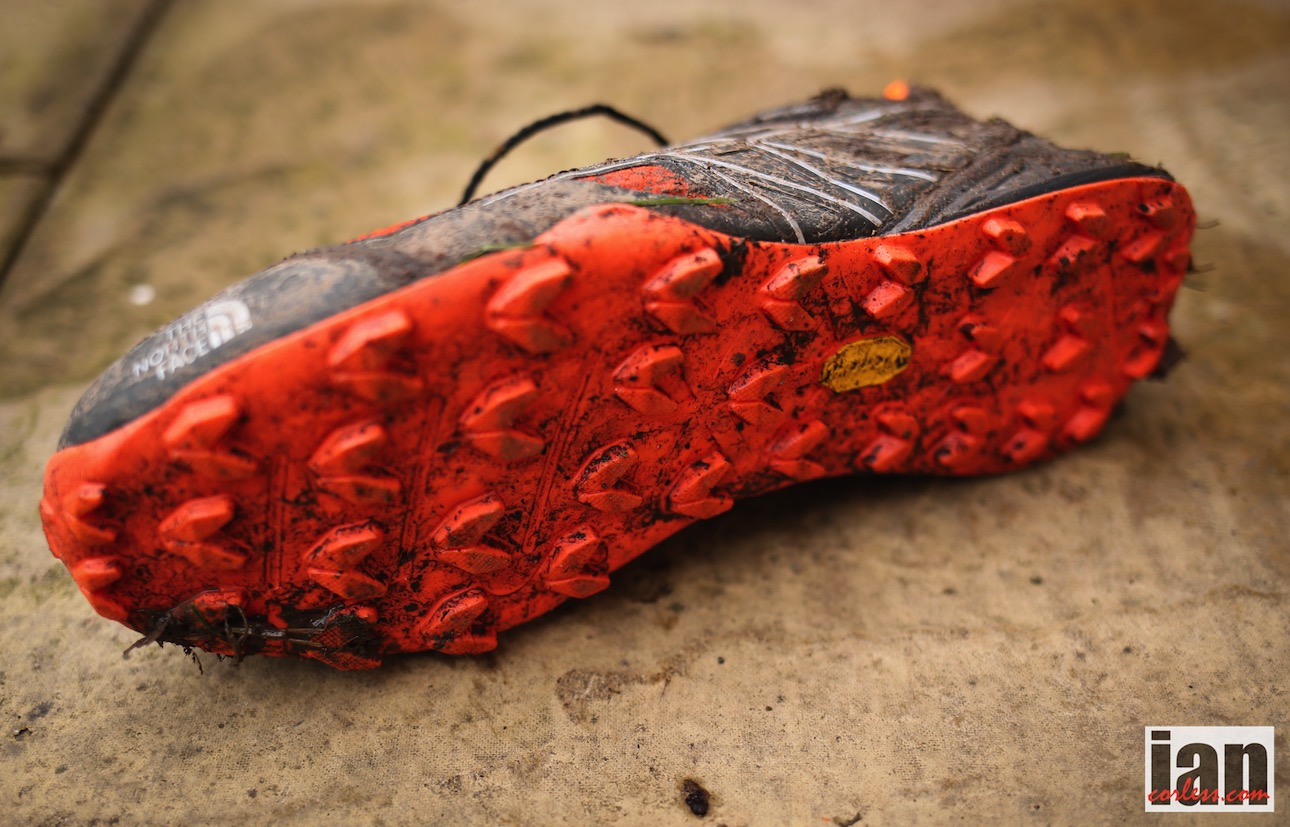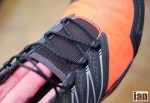 Imagine a scene:
Imagine a scene:
A man enters an elevator, he pulls the cage metal door across and as it clicks into place, his right hand reaches for the buttons to his left. ‘Lower Basement’ is pressed.
As the lift moves, music starts in the background; a lone guitar.
dundedun dun dun dun dundedun dun dun dun dundedun dun dun dun dundedun dun dun dun deDON Do do do
Badap ba daa ba da daa ba daa da deda daa Badap ba daa ba da daa ba daa da deda daa
The lift stops, the gate is pulled open and the man walks into a grey room illuminated by dappled spotlights. Ahead, a man in a white jacket, is crooked over a table with his back turned.
“Argh, 007 you are here, finally! Now listen up. This is the new IROCK2 by VJ Sport. It has Fitlock that ensures a sure and precise fit around the arch and instep of the foot for secure constant changes of direction. The outsole is made of Butyl rubber with an aggressive pattern, it will grip anything in the wet and dry!”
“And the upper Q?” Our man asks.
“007, let me do the talking… The upper is made of Kevlar, it’s stronger than steel, lightweight and extremely durable. Toe box and the heel box is plush, secure and protects from the toughest terrain. Cushioning is provided by KvamO and Duotech. These shoes are designed for fast, light and agile mountain running on any terrain – any questions?”
“When can I use them Q?”
“Have you not been listening Bond? You can use them on the gnarliest, muddiest, wettest, driest, most technical terrain imaginable and they will give you the advantage over the competition… Now go run!”
If James Bond was a mountain runner, he’d be using the IROCK2 by VJ Sport

*****
This review comes in two versions:
Version 1.
The IROCK2 by VJ Sport is the best mountain running shoe for any terrain with superior grip in the wet and dry on the rockiest, gnarliest, muddiest terrain imaginable in a moderately cushioned, 6mm drop, lightweight neutral shoe. It’s the best shoe ever – go buy it!
Version 2.
Read on.

VJ was found in 1981 and has been the secret weapon of Orienteers for many, many years. Ask anyone in the know, affiliated with a brand or not, out of choice, if they could, they would use IROCK when the need for grip on wet and dry surfaces is essential.
I was first introduced to the brand several years ago whilst working on the Tromso SkyRace. I saw the ‘locals’ using them and when out on the trails, mountains that had a mix of rocks, snow and ice, I continually noticed they had more grip than myself. This was confirmed when Jon Albon won Tromso race using IROCK ahead of the ‘almost’ unbeatable Luis Alberto Hernando.
I took note!
The shoe range can be viewed HERE and over the year’s VJ Sport have added and tweaked the line of shoes to 12 models, varying from a very specific Orienteering shoe with metal spikes (midstud) to a kid’s shoe!
Key Features of the IROCK2:

FITLOCK ensures that the fit is snug and holds the foot in place, essential when running on technical and challenging trails when a change of direction happens in a fraction of second. You don’t want a sloppy shoe. FITLOCK supports the arch of the foot and protects from the terrain.
SUPERIOR CONTACT OUTSOLE is made from sticky butyl rubber with an aggressive grip. It has superior grip in wet and dry conditions and lugs are aggressive to gain traction in mud. They are also spaced out to help release mud from the sole so that you don’t get clogged up and lose traction.
Schoeller® – Keprotec® KEVLAR upper is bullet proof and stronger than steel. It is pretty much tear resistant with comfort. The chances of the uppers failing is almost non-existent. The upper also has reinforced sections, the toe box and heel cup protect the foot from the most demanding terrain and to keep the foot secure.
KvamO offers cushioning, torsion support and a shaped insole.
DUOTECH is used on the inner side of the shoe, contrasting against the KvamO. The Duotech is higher density foam which makes for a more durable shoe.
6mm drop
Narrow width
Neutral
IROCK2 was Jon Albon’s shoe of choice for the 2017 season – He is a multiple OCR World Champion and two-time Skyrunner World Series Champion for the Extreme classification.
OUT OF THE BOX
Red and black, always works for shoe colours and I feel and I am instantly attracted to the IROCK2. However, they don’t look like run shoes… almost a cross between a football boot and a shoe for MTB. They look heavy!
I lift one up. They are not heavy… It almost comes as a surprise. Immediate first impression is how robust the shoe looks. The heel box is reinforced, the Fitlock looks aggressive and secure, the Kevlar material looks like it is interwoven with strands of steel and the toe box reinforced with a bumper. Turning the shoe over, soft black butyl rubber covers the outsole and a mass of aggressive studs immediately confirm that the IROCK2 means business as far as grip is concerned.


Lacing is very secure and the tongue is reinforced and made of a very durable flexible but hard material. I am surprised to find that the IROCK2 does not have a gusseted tongue or sock liner fit. I feel disappointed! It’s no secret if you read my shoe reviews that this is by far my favourite method of shoe fit. The toe box looks really narrow – I expected narrow as this is a precision shoe, however, they look narrower than expected.
All-in-all, I am impressed. Great looks, solid build, aggressive outsole but I have concerns on the toe box and lack of sock liner/ gusseted tongue.
IN USE
It’s important to remember here that the IROCK2 is not a jack of all trades, it’s not a trail shoe, it’s not hybrid shoe, it’s not a shoe for the road – it is an out-and-out specific fell/ mountain running shoe and as such, you should and must keep this in mind if considering if the shoe is for you!
The easiest way to explain this is by looking at say, Formula 1. You wouldn’t go to Monaco Grand Prix and race in a MPV car, a saloon car or a bus, you’d have a very specific vehicle, low to the ground with incredible speed and awesome agility with incredible grip. The IROCK2 is the Formula 1 for fell and mountain running.

I loosen the laces and slide my foot in. I am immediately surprised that the toe box is deceptively more spacious than anticipated. Almost Tardis like. Don’t get me wrong here, they are not spacious that would allow ones toes to splay. The fit is secure but not overly narrow, however, if you have Hobbit like feet, the IROCK2 is not going to be for you! It is normal in fell/ mountain running shoes that a ‘precision’ fit is required as this provides security and precision when running, exactly what you need when on demanding and challenging terrain.
As I pull the laces tight, I am immediately surprised how well the tongue fits to my foot and the lack of a sock liner or gusseted tongue soon becomes no issue. The Fitlock steps in and I have to say that this is one of THE secret weapons of the shoe. You immediately feel the support and security this system brings as I tighten and adjust the laces.


The reinforced heel box adds to this security and once laced up and adjusted I soon realize that the IROCK2 has incredible fit and security – and I haven’t even run in them yet!

As I walk around my apartment, the wooden floor provides a solid surface, I feel the grip of the Butyl outsole take hold and with each lift of my foot, the shoes make a sound a little like when separating two strips of Velcro. These shoes seriously grip.
Orienteering, fell and outright mountain shoes rarely have a great deal of cushioning as the need to be low and feel the ground is essential. The IROCK2 has cushioning and it is noticeable without compromising feel, importantly there is also a rock plate for protection. Therefore, this shoe certainly provides an option for longer races, be that in distance or time. How long or how far depends on the runner, but I would certainly consider this shoe for 6-8 hour mountain jaunts. You also must remember that if running on soft and muddy ground, much of the cushioning actually comes from the ground beneath ones feet. Rocky and hard trails are a different story.

ON THE TRAILS
I always start my test runs with a section of road and the IROCK2 keeps me honest wanting to land fore to mid foot. I can hear and feel the grip on the road and I am surprised at the level of comfort and cushioning for such an aggressive shoe. I set my mind at ease knowing that the IROCK2 can handle road sections should they crop up in a race or training. Note though, the outsole won’t thank you for this and one can expect it to wear quicker if you throw too much tarmac at them.
6mm drop works well and although 8mm is normally preferable (for me) it is appropriate that a shoe of this nature has a lower drop keeping you connected to the ground. The fit is neutral but Fitlock really does provide support (in a good way) to ones arch. Fit is true to size.
Back on the tail, a 3-mile section of single track flies by as the shoes happily eat up the miles switching between hard and dry sections and soft, wet, muddy sections don’t compromise the grip.

Off track and the IROCK2 start to feel seriously at home. I am now on open fell that is rutted. I am constantly changing direction and this is when I feel the Fitlock and heel box working together. For me, it’s the best feel and most secure of any mountain running shoe I have used. No question!
The outsole is gripping everything.
On a vertical wall of grass and mud, I am on my toes and the shoes just dig in and keep me going forward with no wasted energy through slipping.
I hit an extremely muddy section. It’s like a brown river. Constant rain has made it into a brown lake and as I run through it, the height passes my ankle. Once again, I feel the shoes pushing through the soft upper layers to find traction below. Grip is found and I am able to move on with more security than any other shoe used. The closest comparison coming with an inov-8 Mudclaw.
It’s on rocks, wet or dry, that the IROCK2 becomes outstanding. I have had mountain shoes in the past that have handled the mud only to find that rock, and in particular, wet rock grip is compromised. The IROCK2 stand out as the best in its class with unmatched grip and control.



The run continues on and as the terrain constantly changes I am finding that the IROCK2’s are handling everything but it is the overall package of the shoe that is impressing me and no one stand out feature.
It is the combination of durability, fit, cushioning, precision and unmatched grip that is making me realize that the IROCK2 is the best fell/ mountain shoe I have used.

LONG TERM
Mud, rock, fell in wet or dry conditions, the IROCK2 is the best I have used. I have now put just under 200-miles on them on a whole multitude of scenarios and without doubt, this shoe stands out. It’s the overall package as mentioned above that make them so special and in comparison to other brands, the Kevlar uppers show no sign of use.
It’s easy to get carried away when writing about a shoe like this but so often I have had a mountain shoe that does one thing really well only to find that it is compromised in another use. Not so with the IROCK2.
It is the most complete mountain shoe I have used for its specific use.
SUMMARY
VJ Sport was created in 1981 and although I first became aware of these shoes in 2014, I have to say that I really have a feel of ‘FOMO!’ – Fear Of Missing Out.
Orienteers and obstacle racers will be reading this review and saying – ‘Yep, yep and yep!’
They will be asking the question, ‘What took you so long?’
They are correct, what did take me so long?
VJ Sport have been making secret weapons for the orienteering world for so many years but now the secret is out!
I have already heard many a Skyrunner talking about the original IROCK and now the IROCK2 moves things up a notch and quite simply:
This is the best fell/ mountain running shoe I have ever used.
CONCLUSION
It’s a glowing review, no doubt.
There are so many PROS to the shoe that I feel I must try and reign myself in and find some CONS, so, here goes:
I have been trying to get a pair of IROCK’s for sometime, it took me 18-months to finally get a pair. They are not easy to come across! However, see at the bottom of this review as we have an offer.
The IROCK2 is a fine tuned piece of kit designed to excel with a very specific use. This is not an everyday shoe (unless you are always on fells/ mountains) that you use on road and smooth trail.
In reference to point 2, you will need other run shoes for those ‘normal’ runs when the IROCK’s are not required.
The IROCK2 has cushioning but it is NOT a ‘cushioned’ shoe and it shouldn’t be. Some cushioning is good but anymore and this shoe would lose the feel and control that makes it so great.
The fit is precision, again, as it should be for a shoe with such specific use. Worth keeping in mind for the Hobbits out there!
FINALLY
Skyrunning? Fell running? Mountain running? Running in the wet, mud, on dry rocks and wet rocks?
Need a 6mm drop, neutral and moderately cushioned shoe?
Look no further than the IROCK2 by VJ Sport.

OFFER
*Please note, I have no affiliation or working relationship with the following, this is purely an offer to help those who may be interested in the IROCK2 to purchase a pair.
















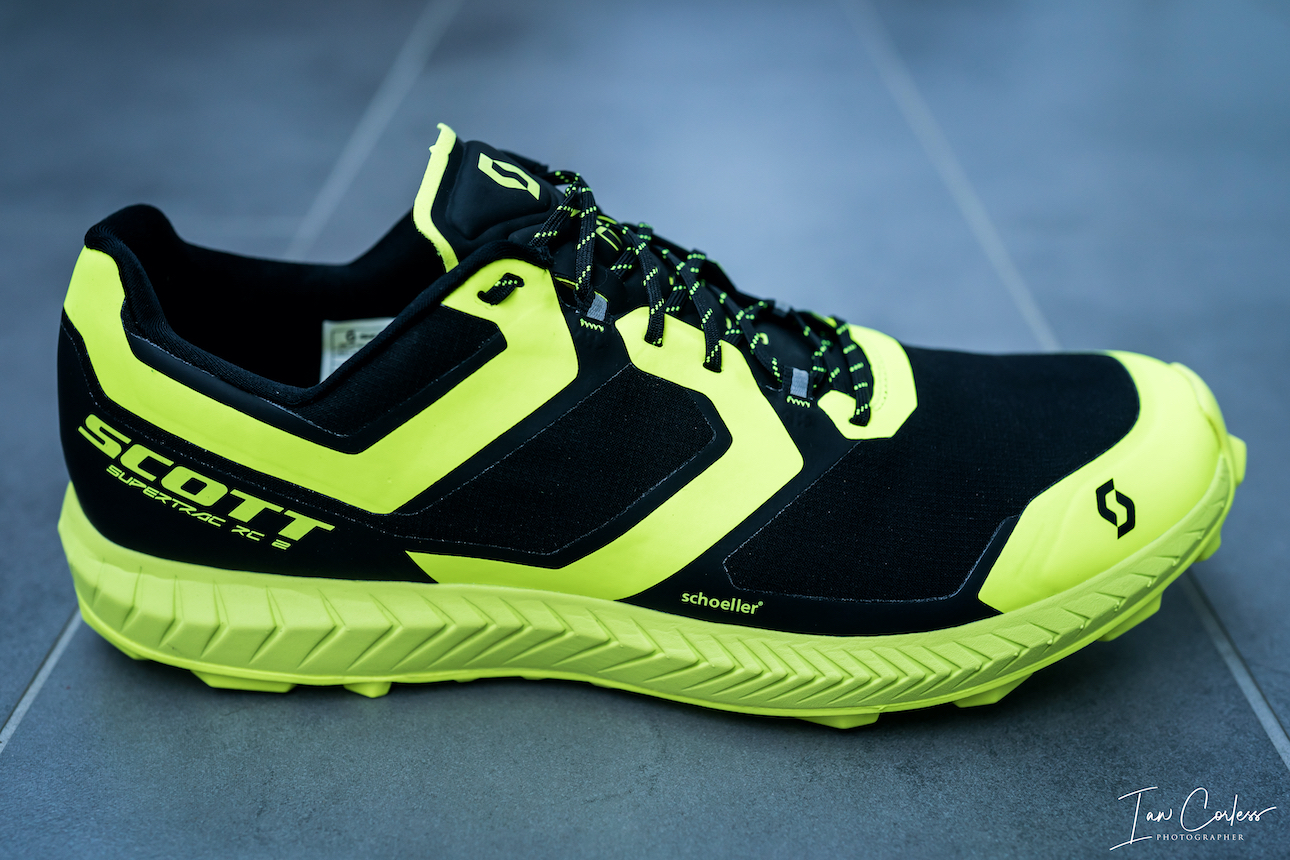








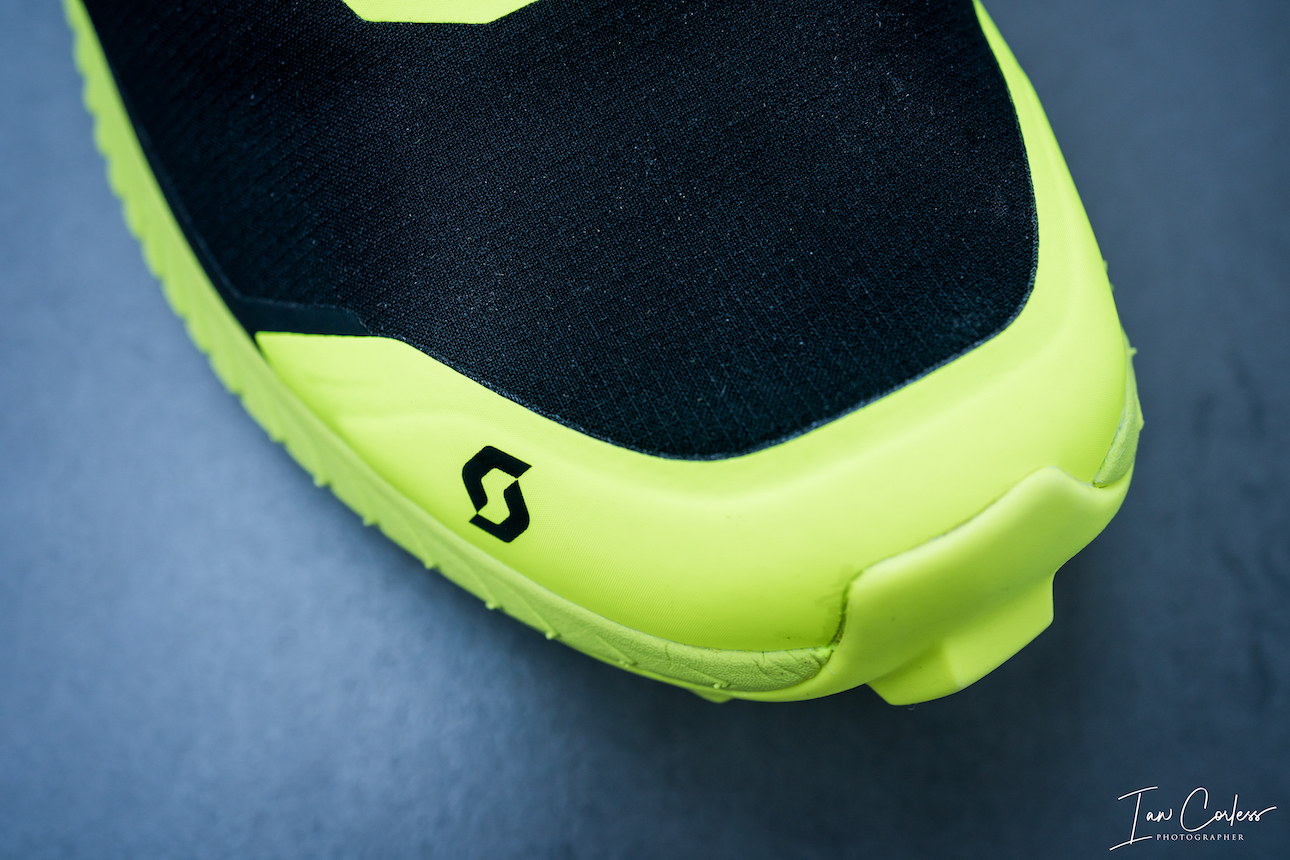

 If you wanted a shoe just for mud, then a more aggressive outsole would be better. But the Supertrac RC 2 quite rightly wants to provide a great all-rounder that handles mud, technical terrain and can still be comfortable when cruising some single-track.
If you wanted a shoe just for mud, then a more aggressive outsole would be better. But the Supertrac RC 2 quite rightly wants to provide a great all-rounder that handles mud, technical terrain and can still be comfortable when cruising some single-track.


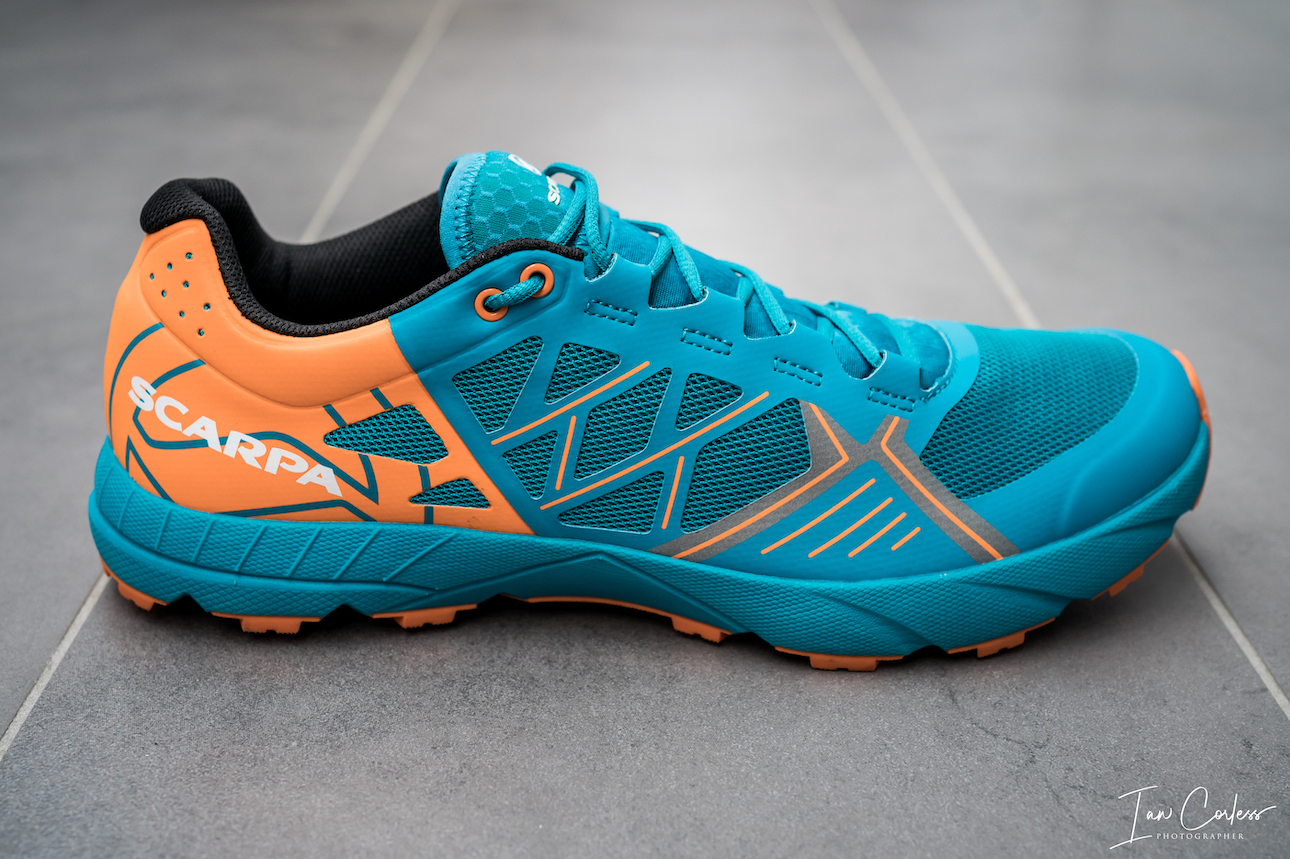
















 Imagine a scene:
Imagine a scene:









































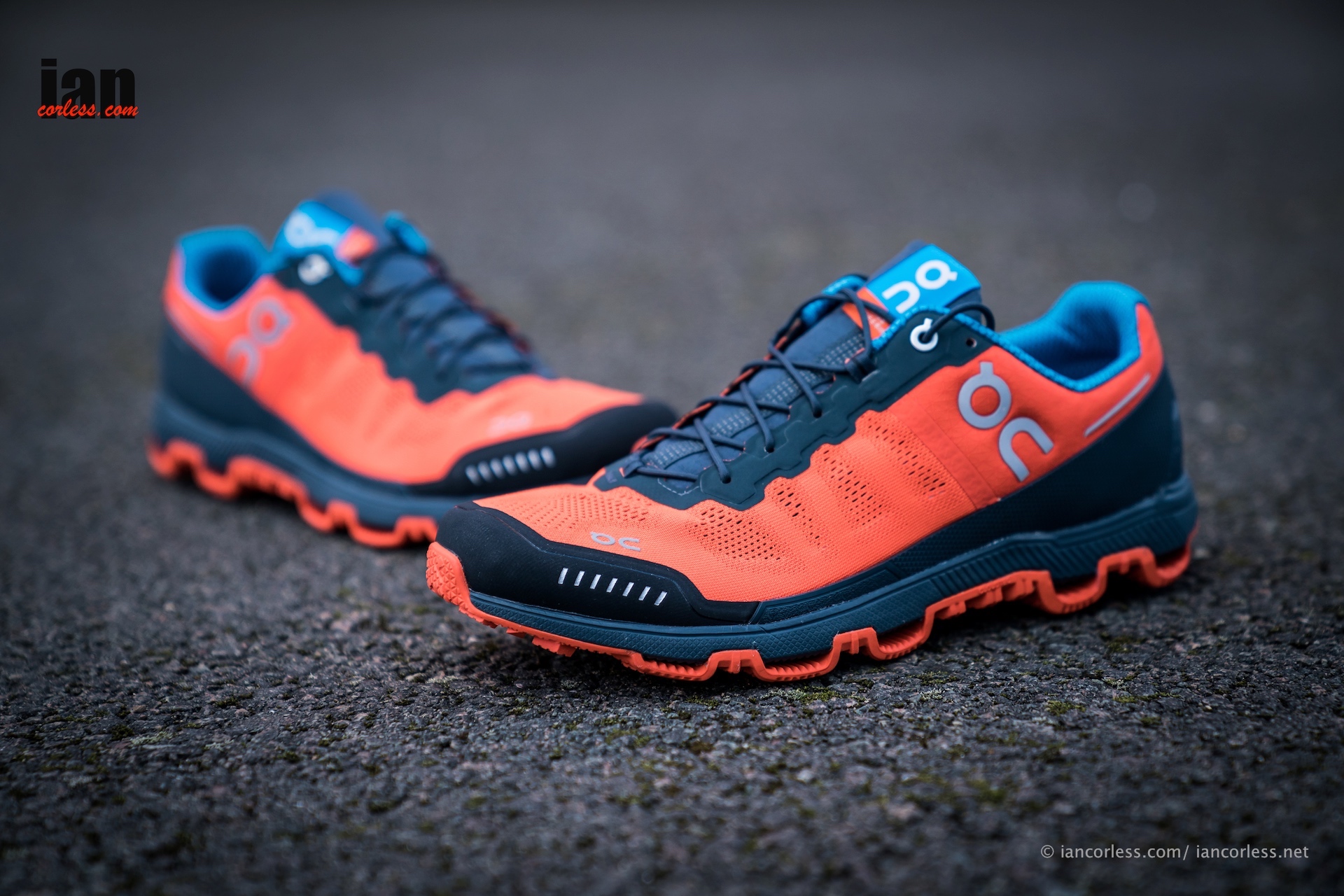






 Grip varies over the outsole with four different levels, each designed to address a different situation when running, primarily:
Grip varies over the outsole with four different levels, each designed to address a different situation when running, primarily:













